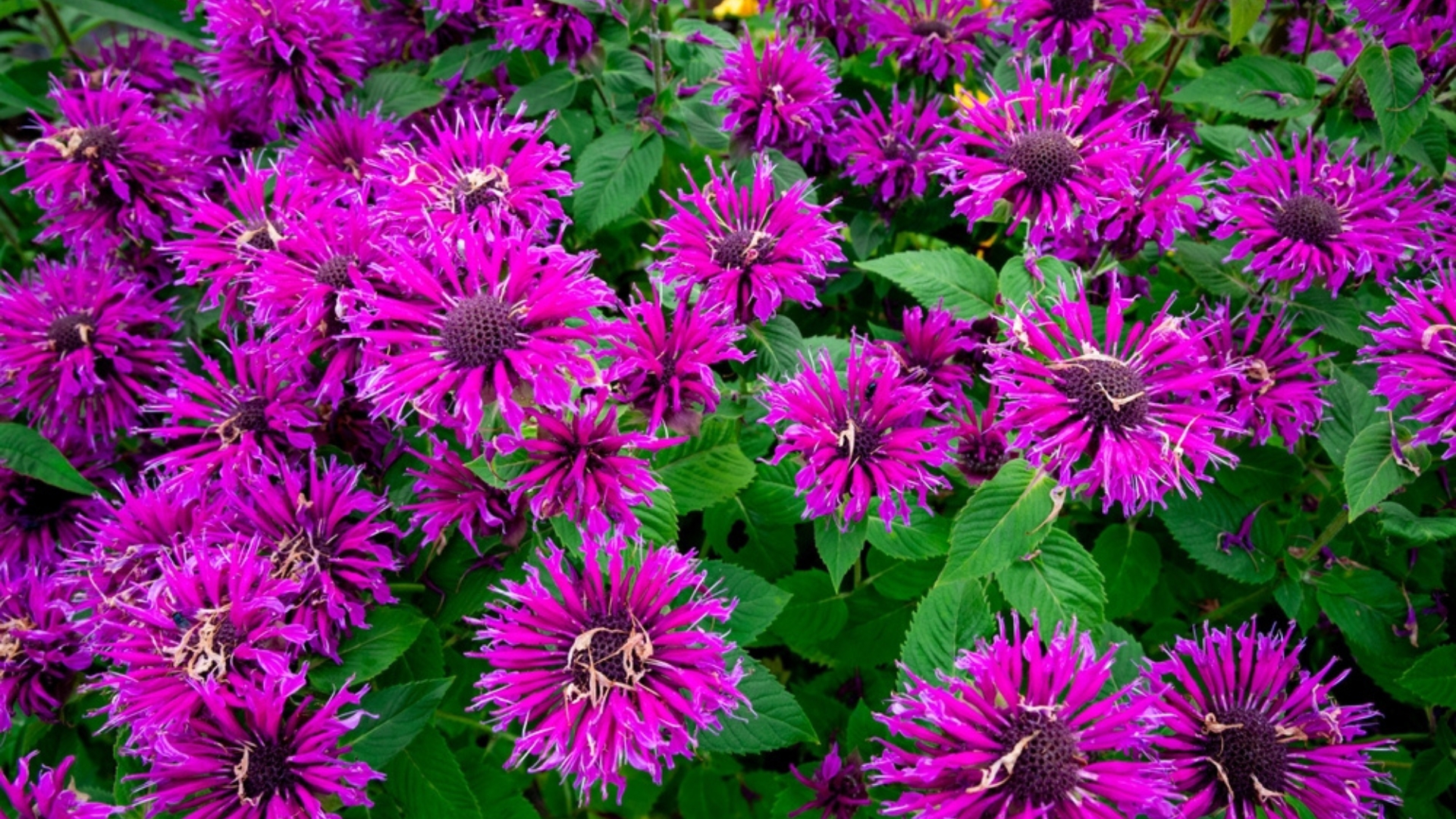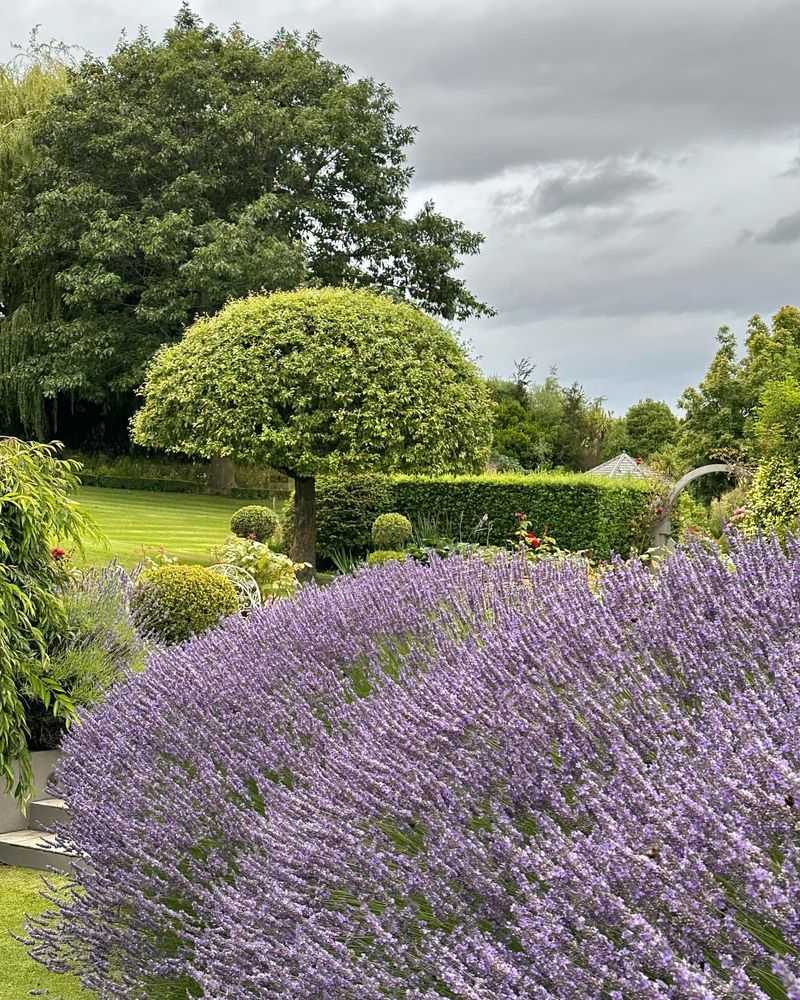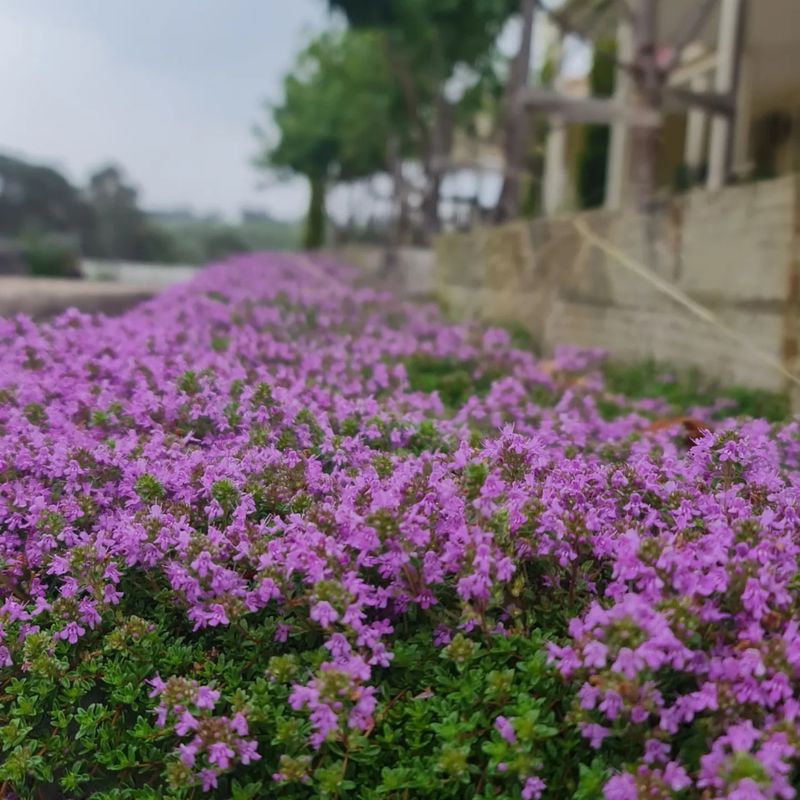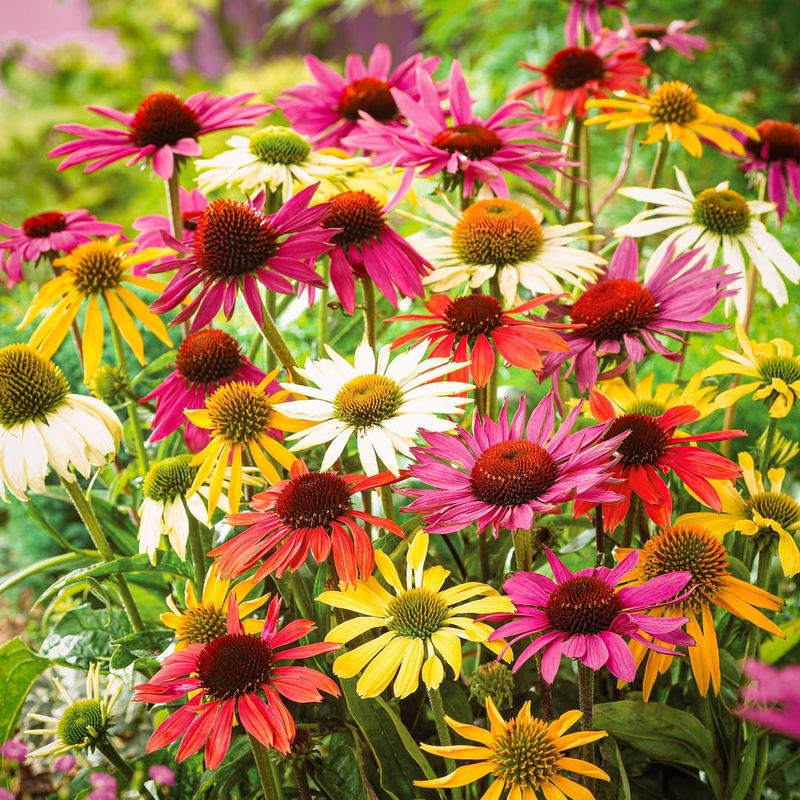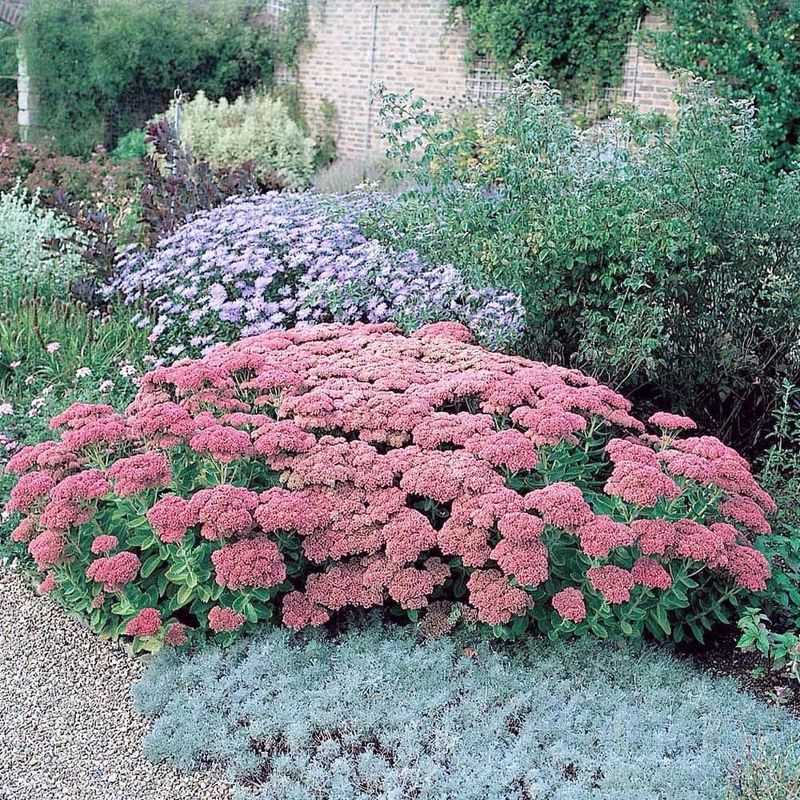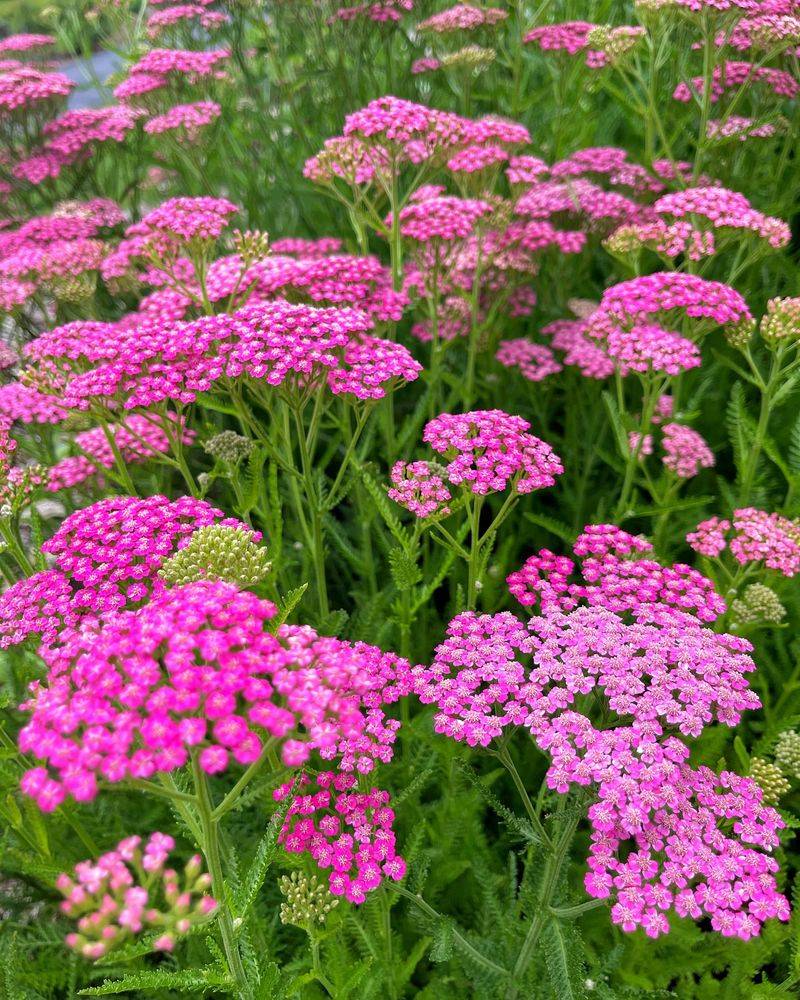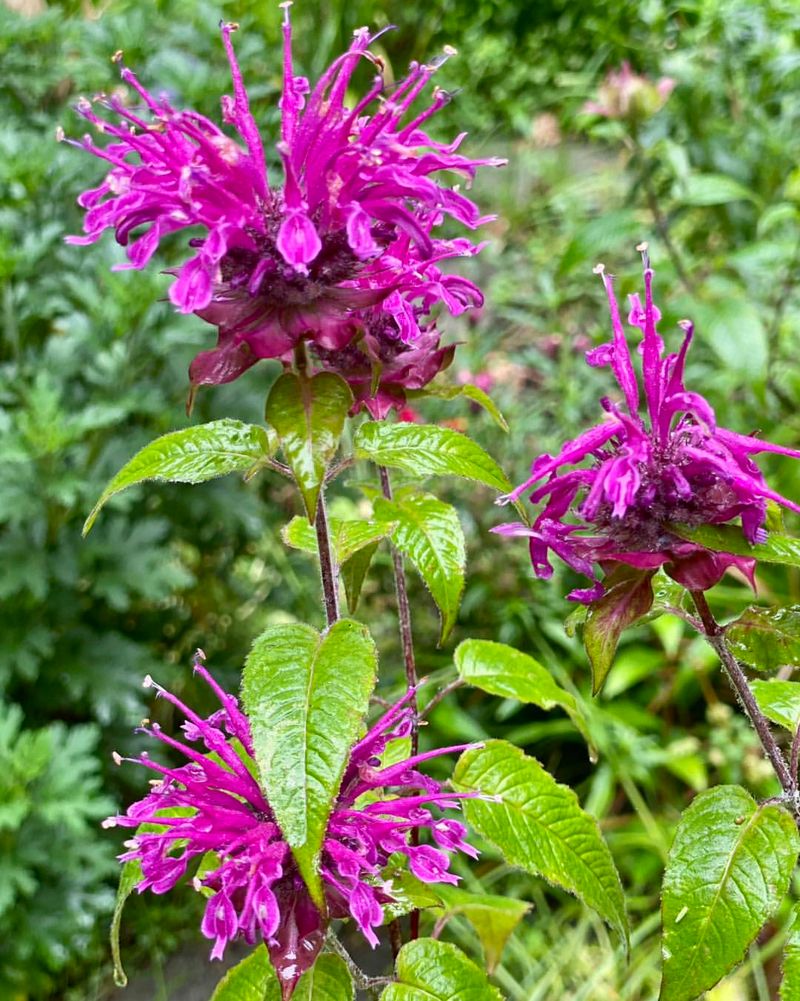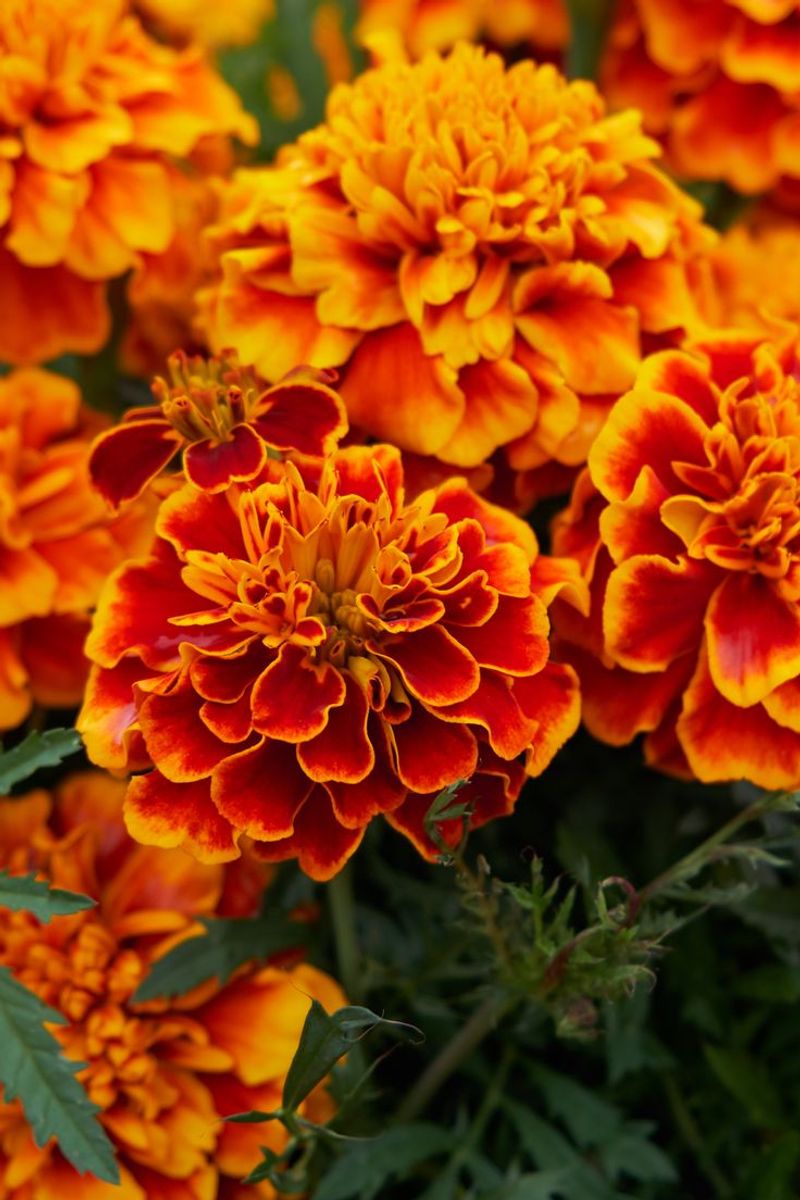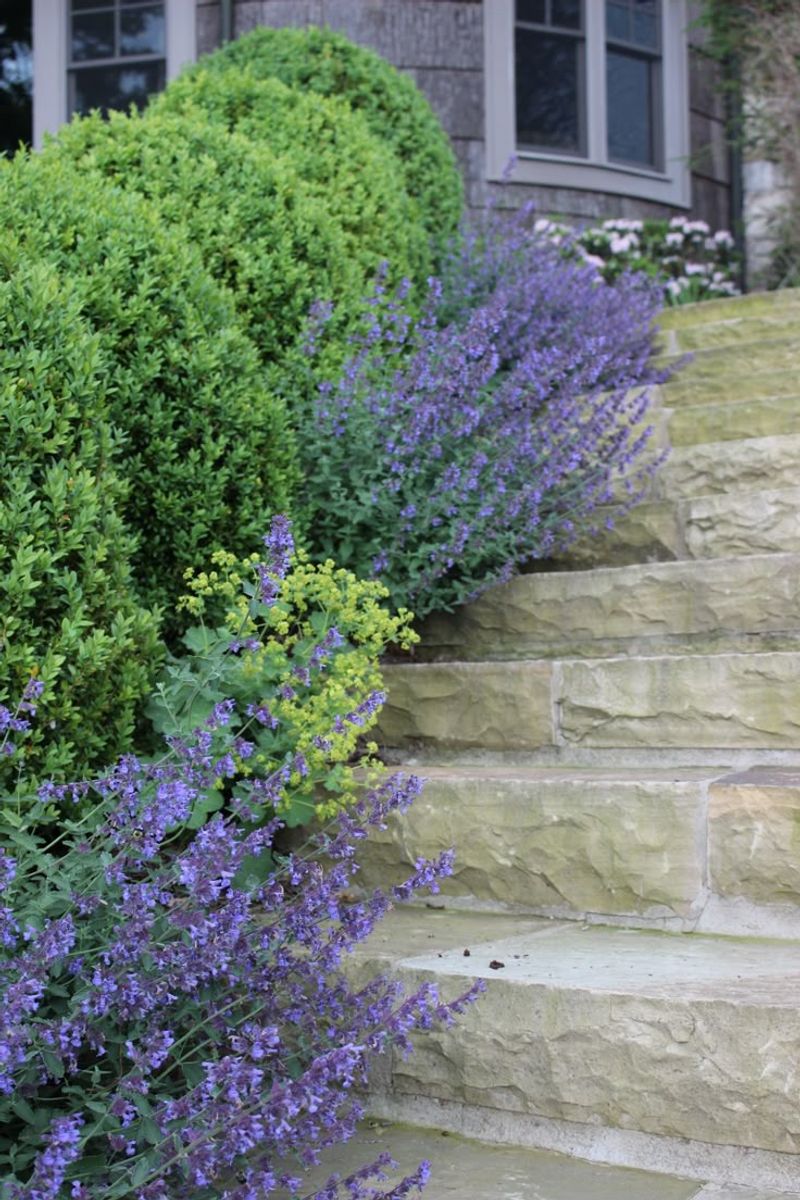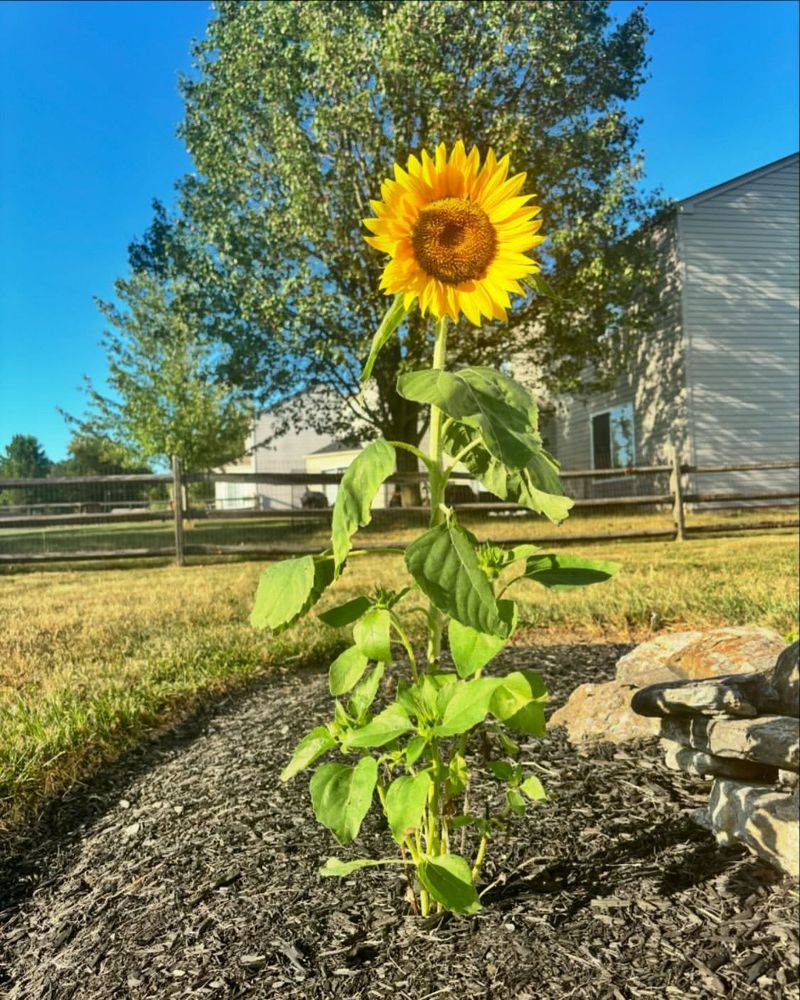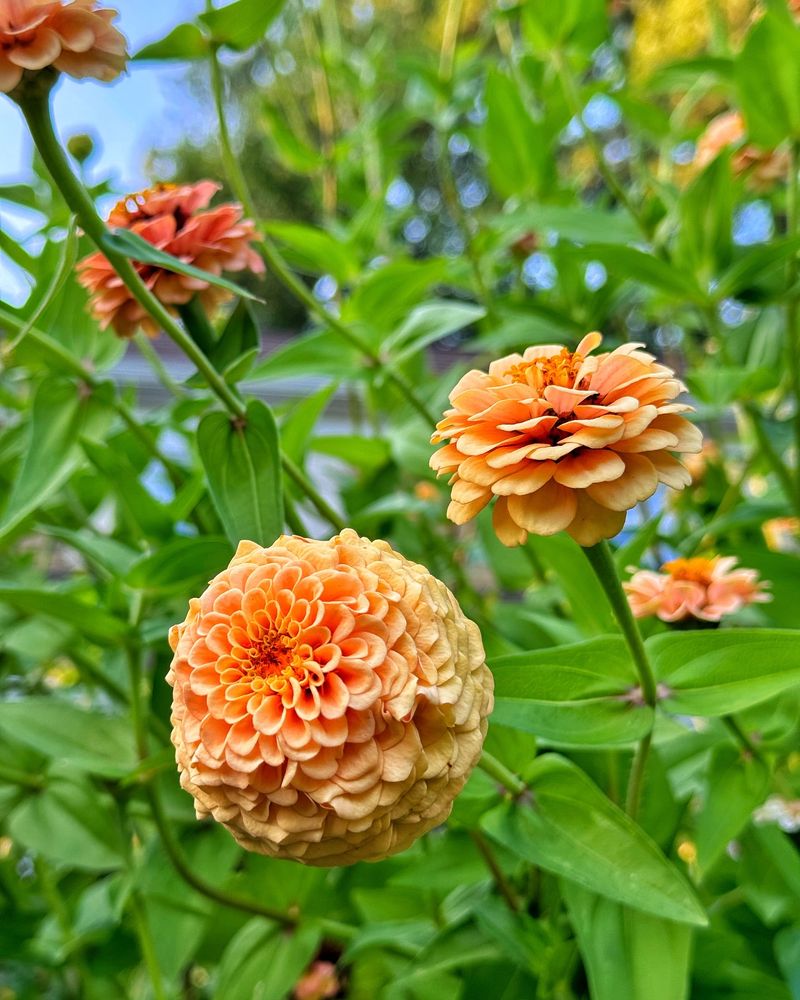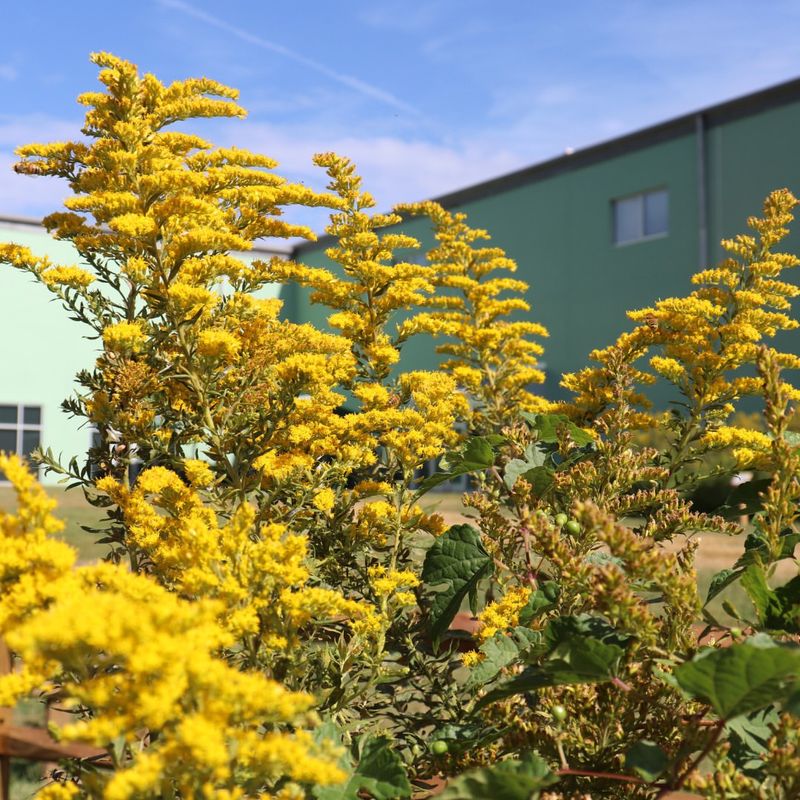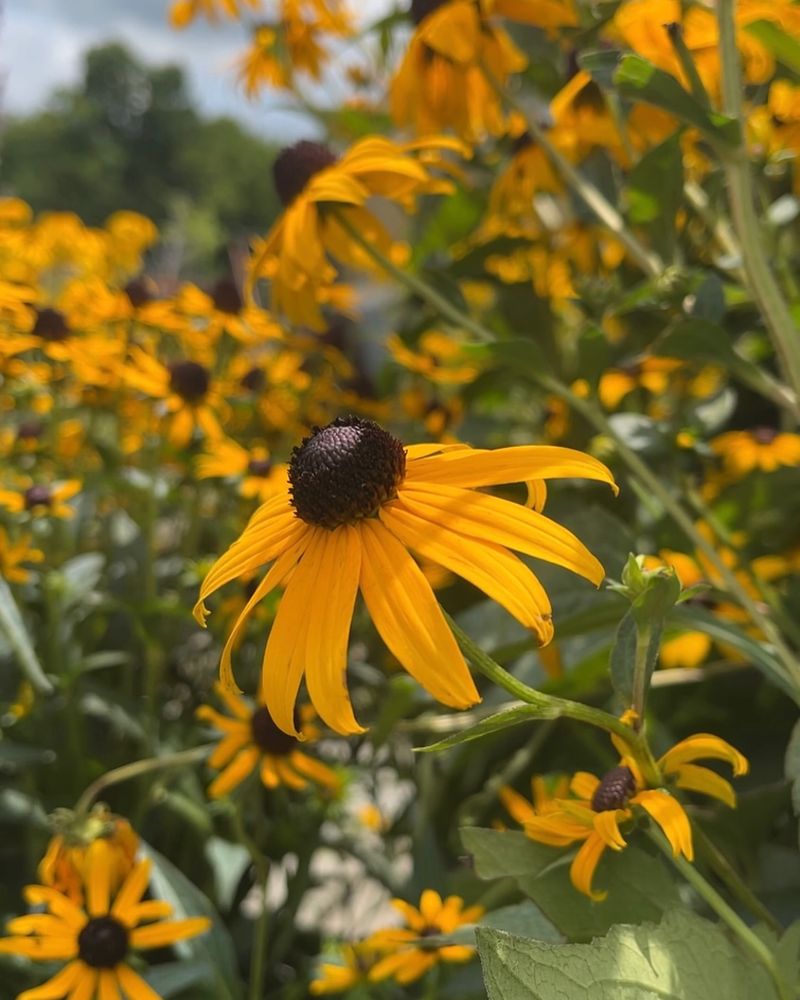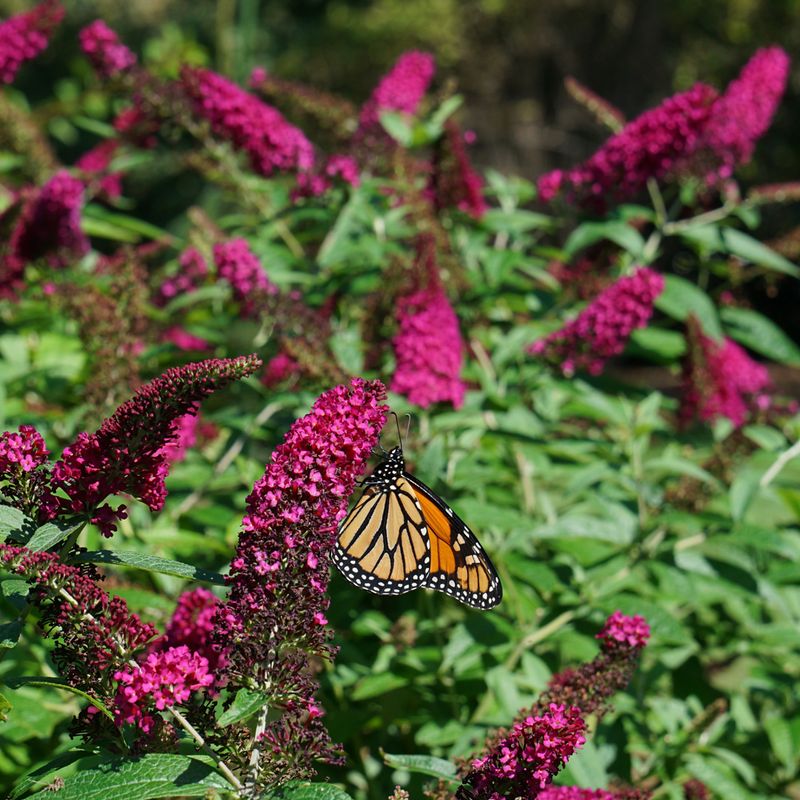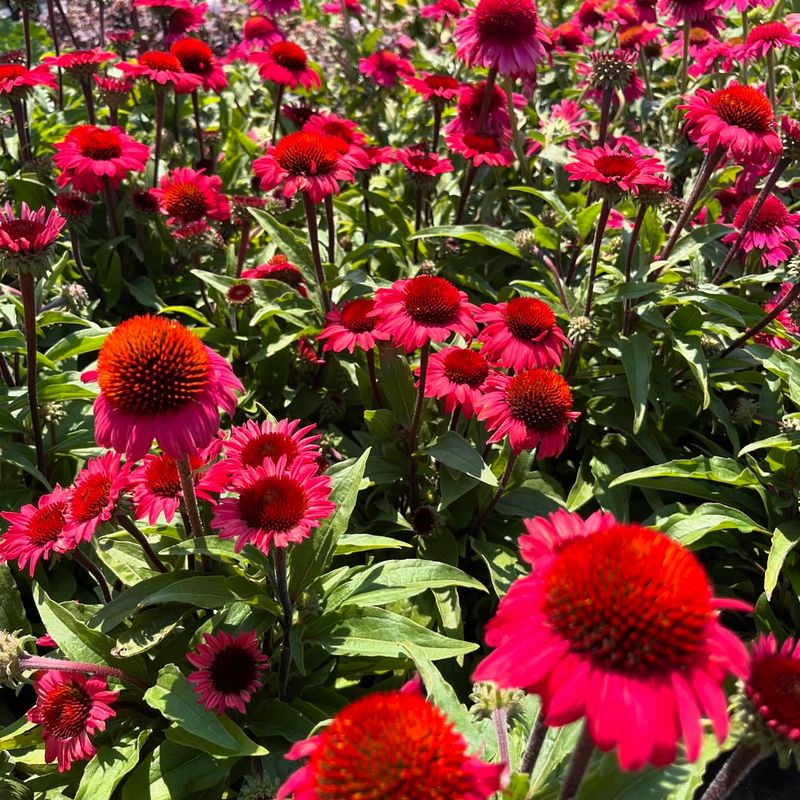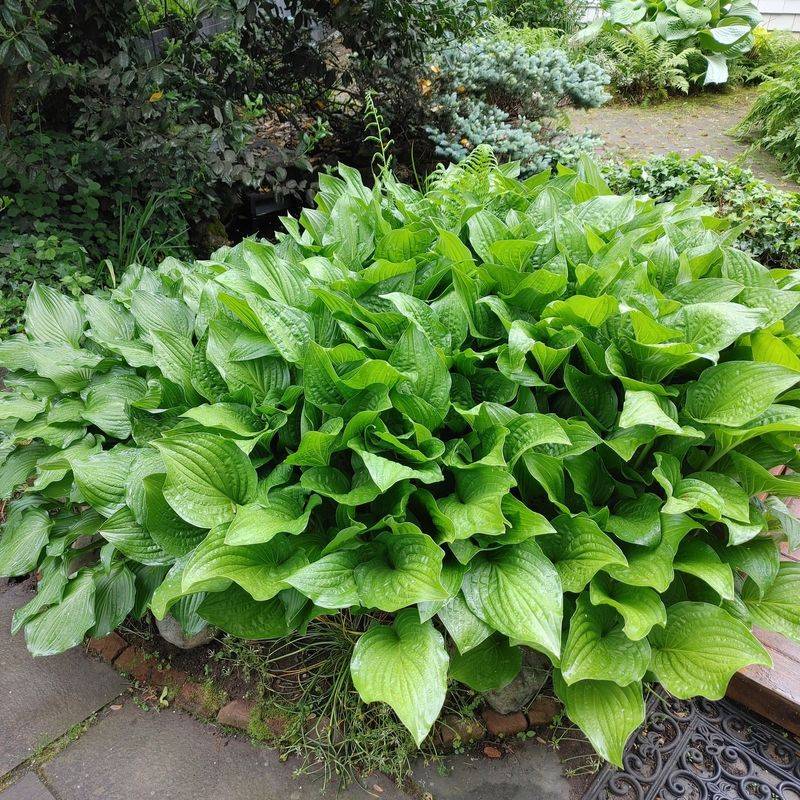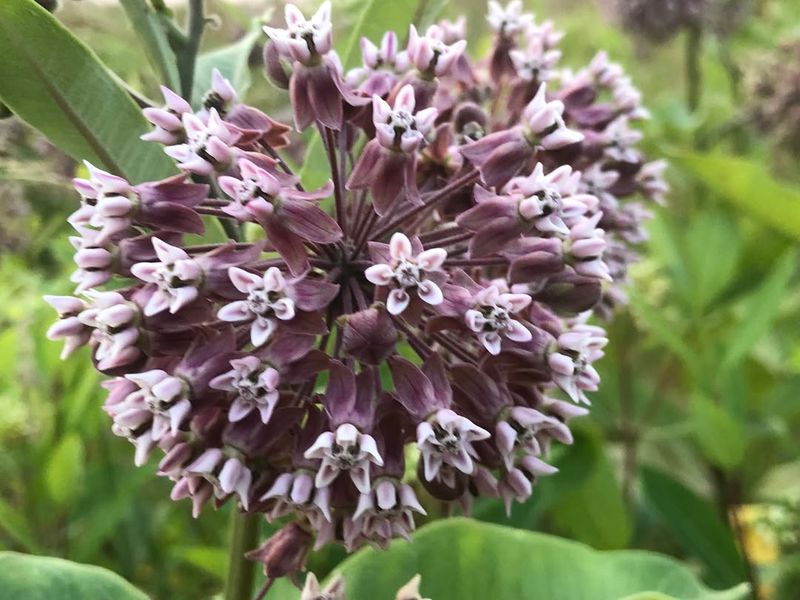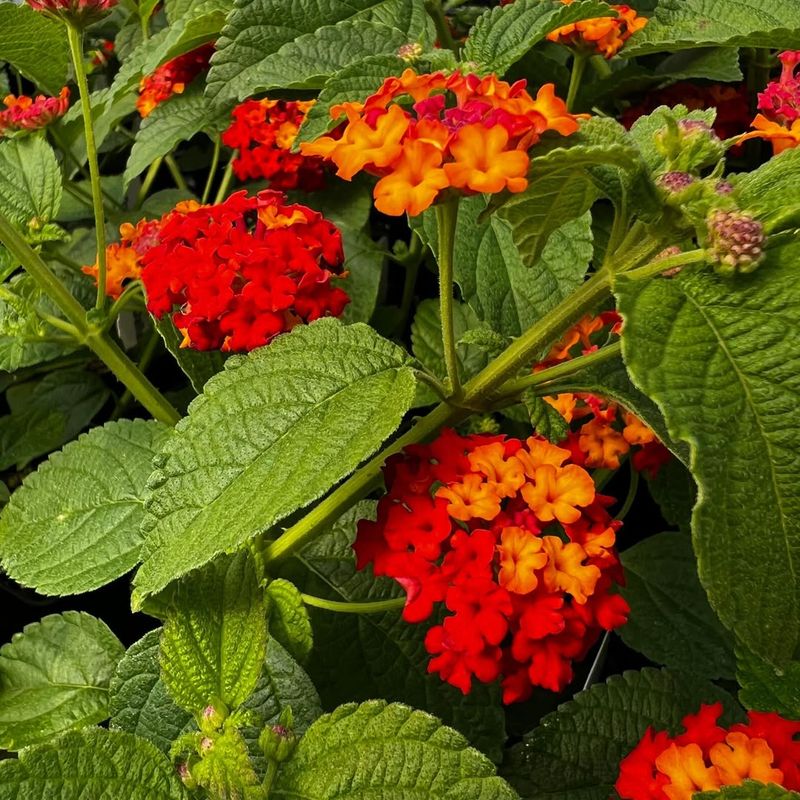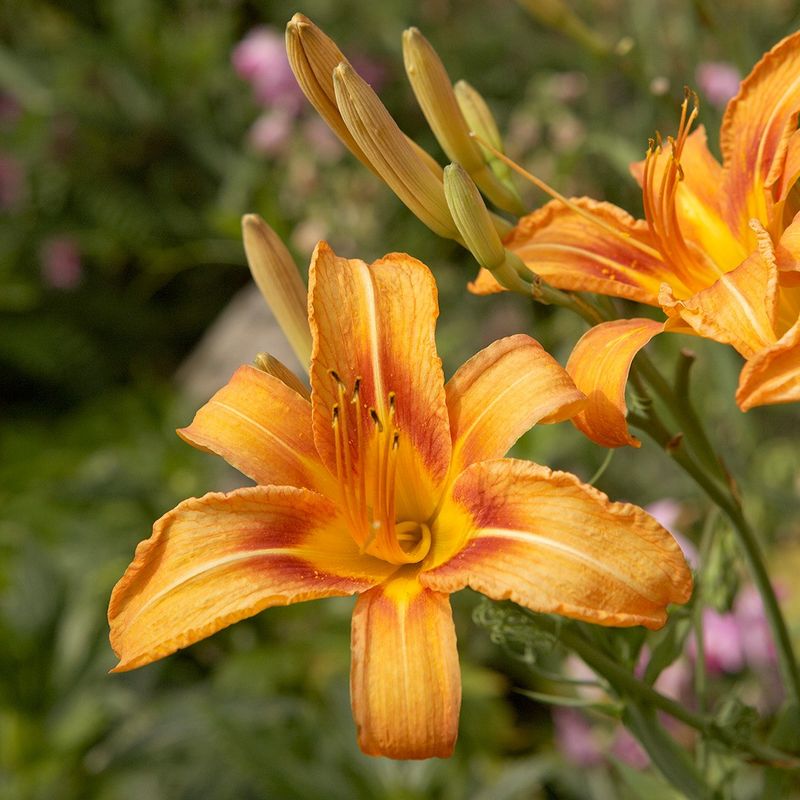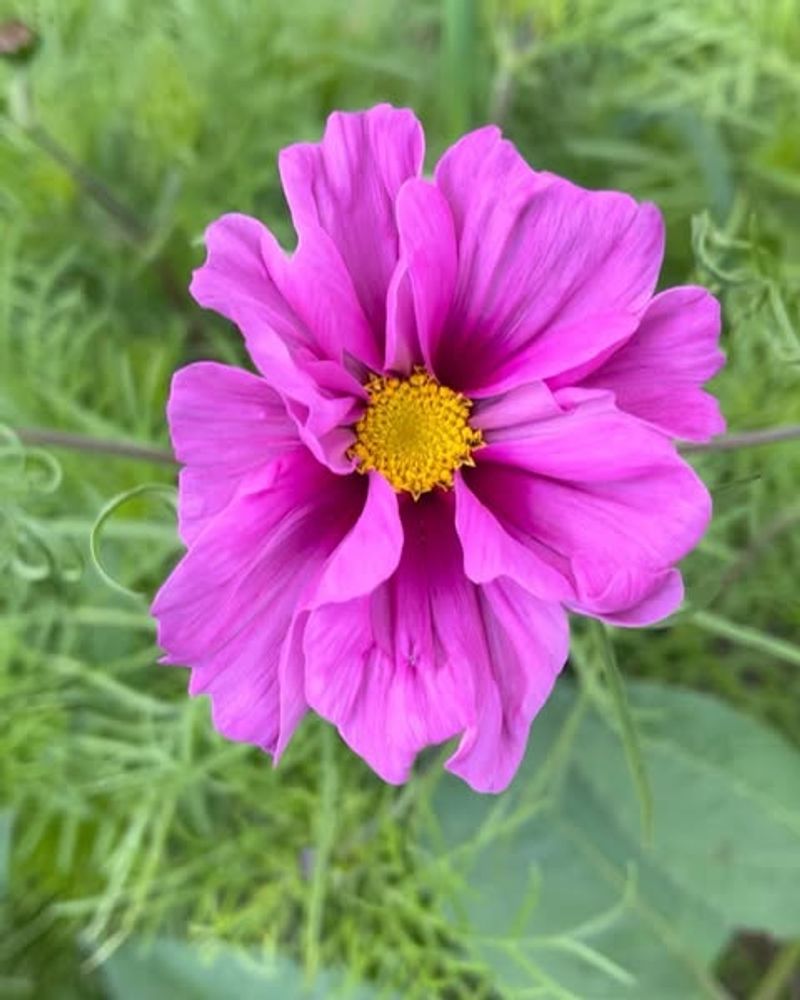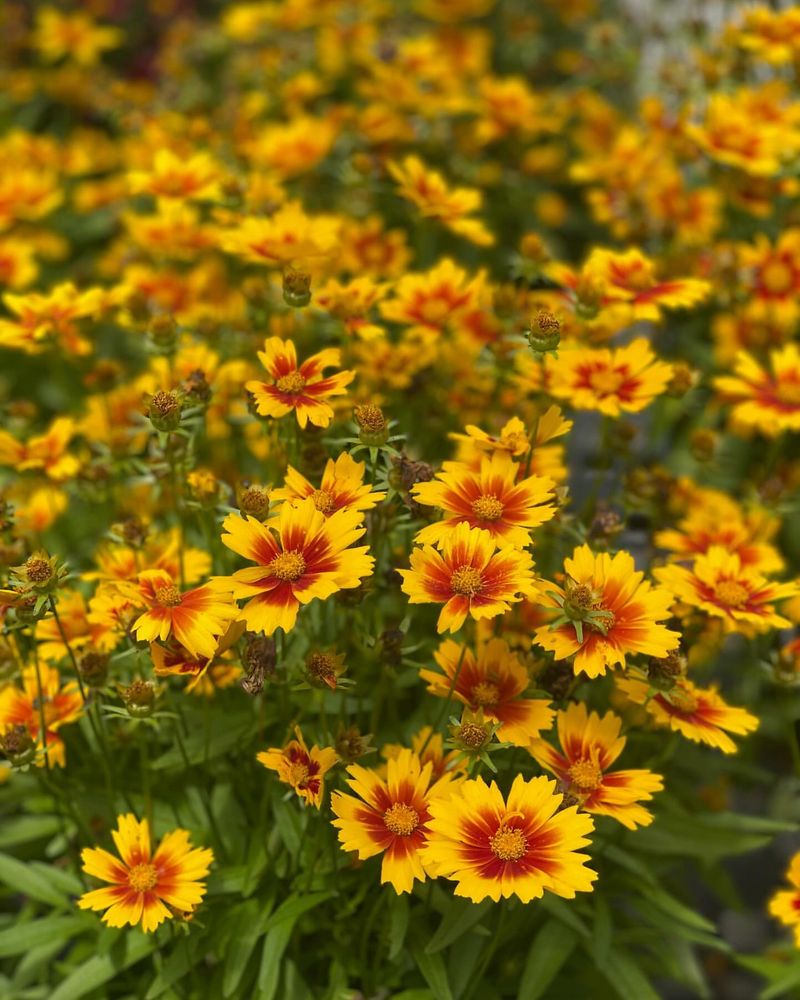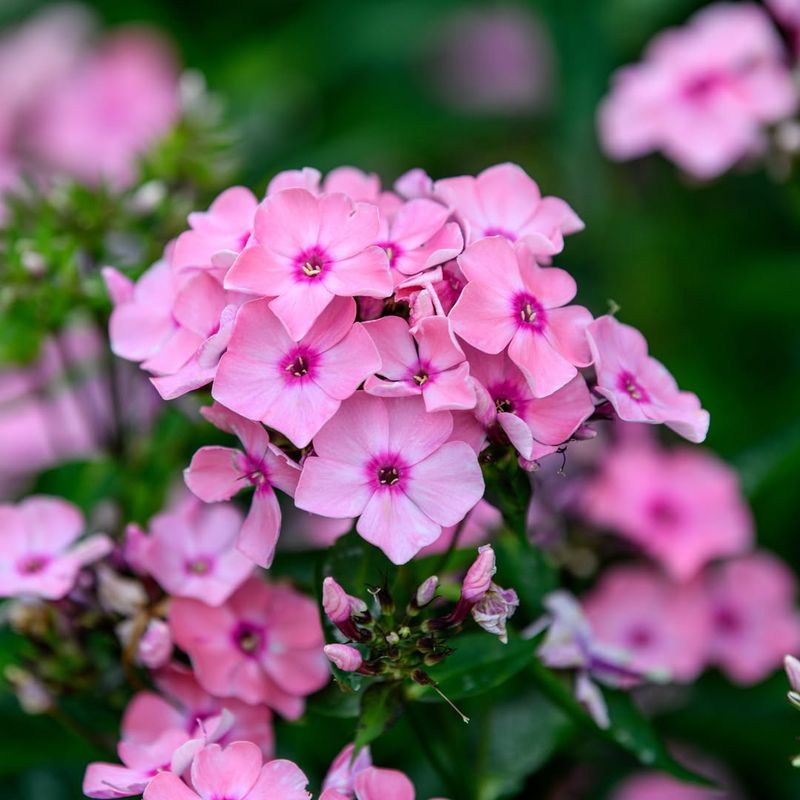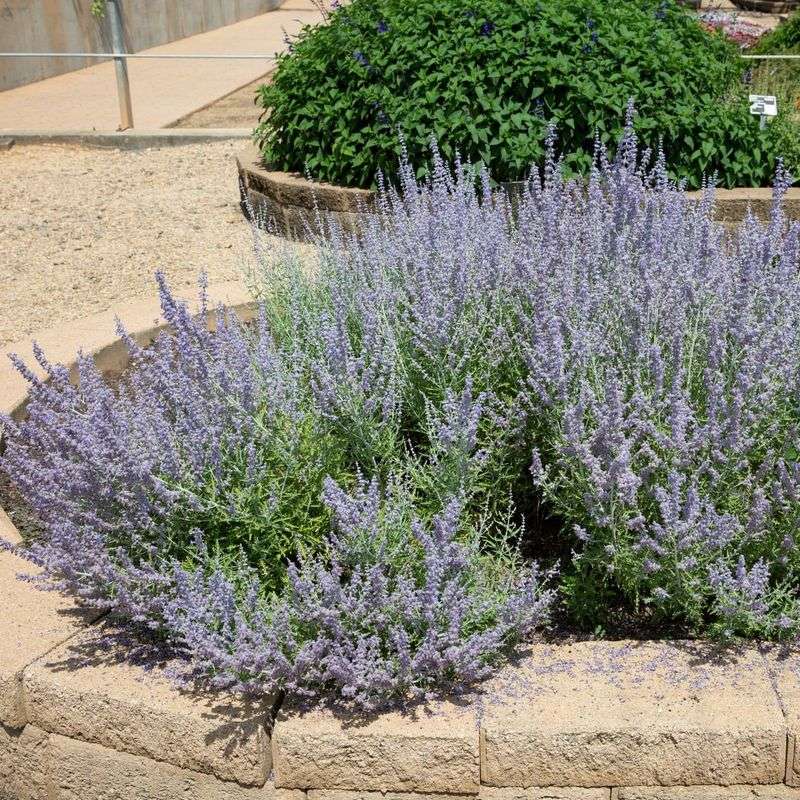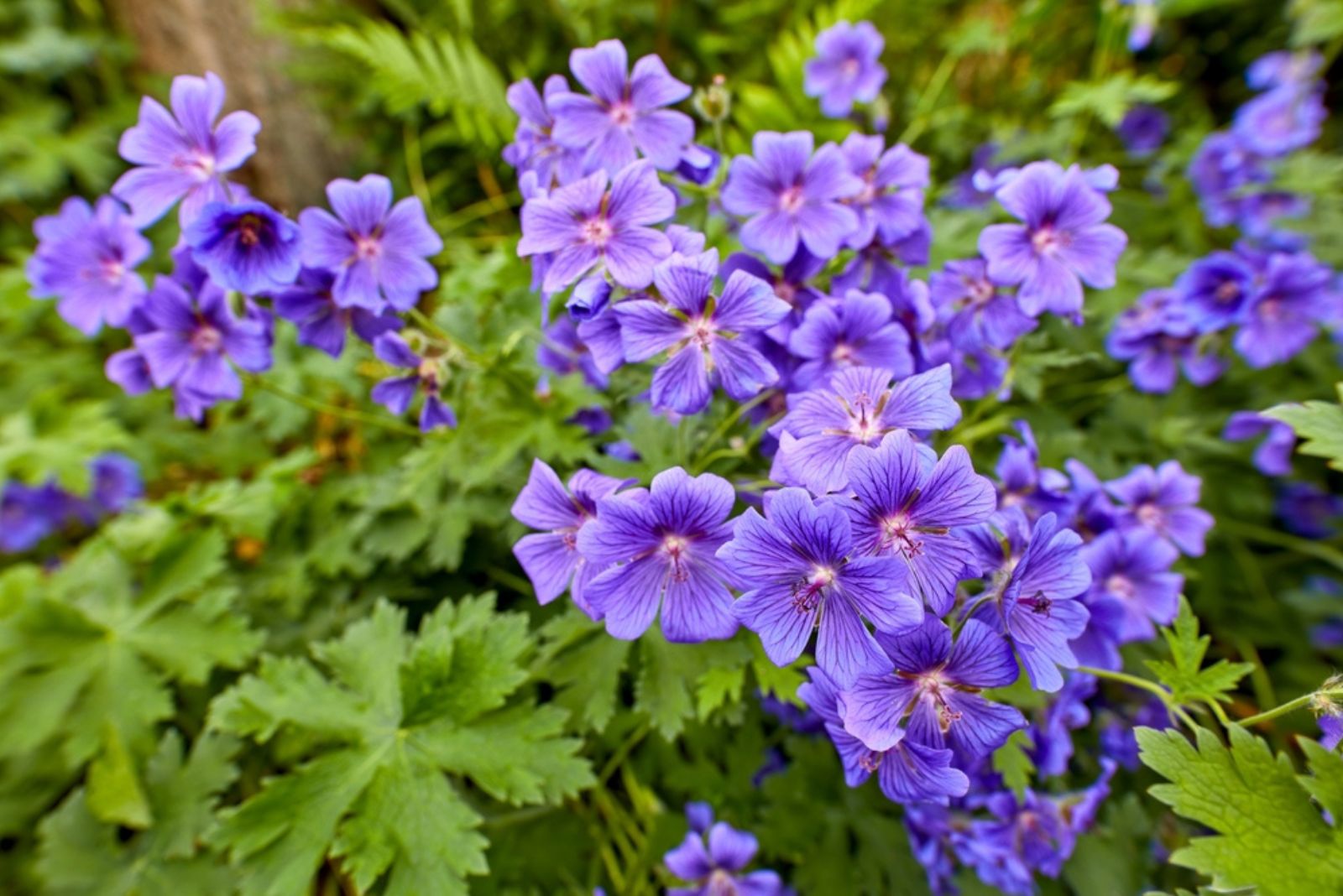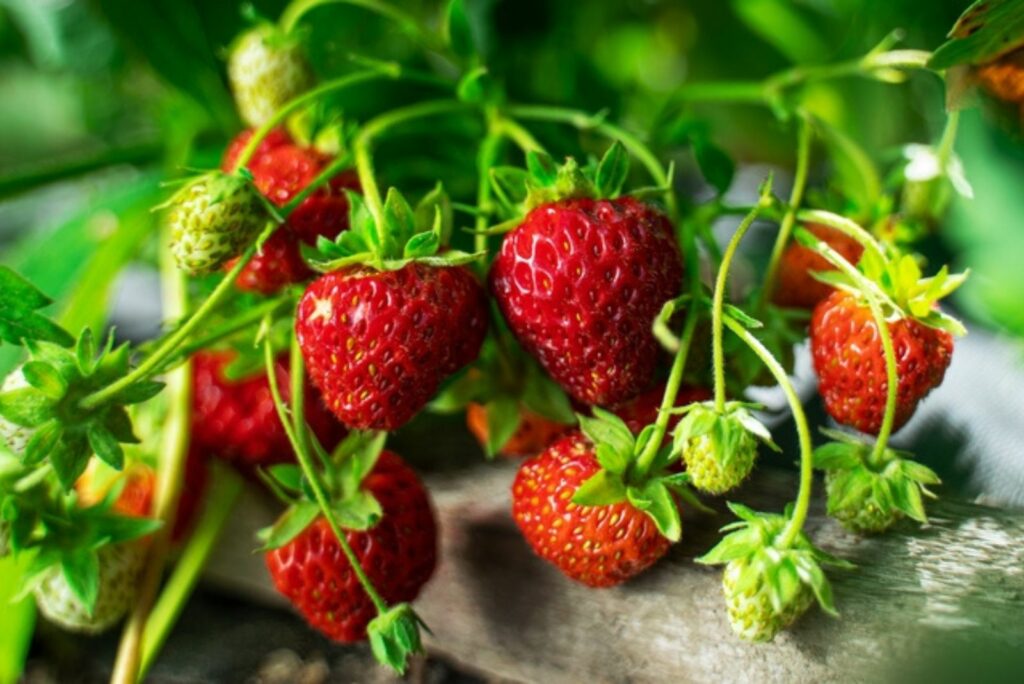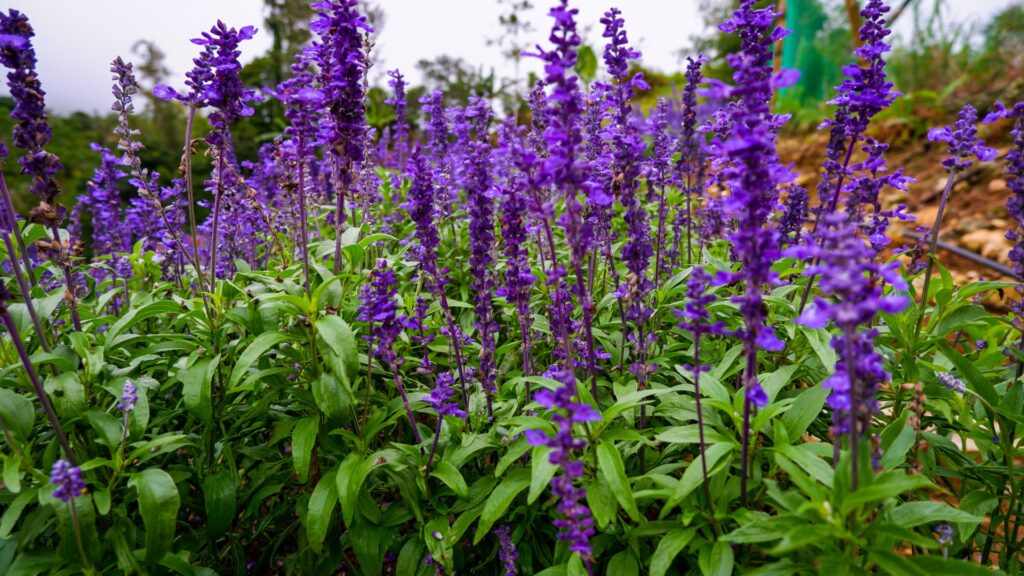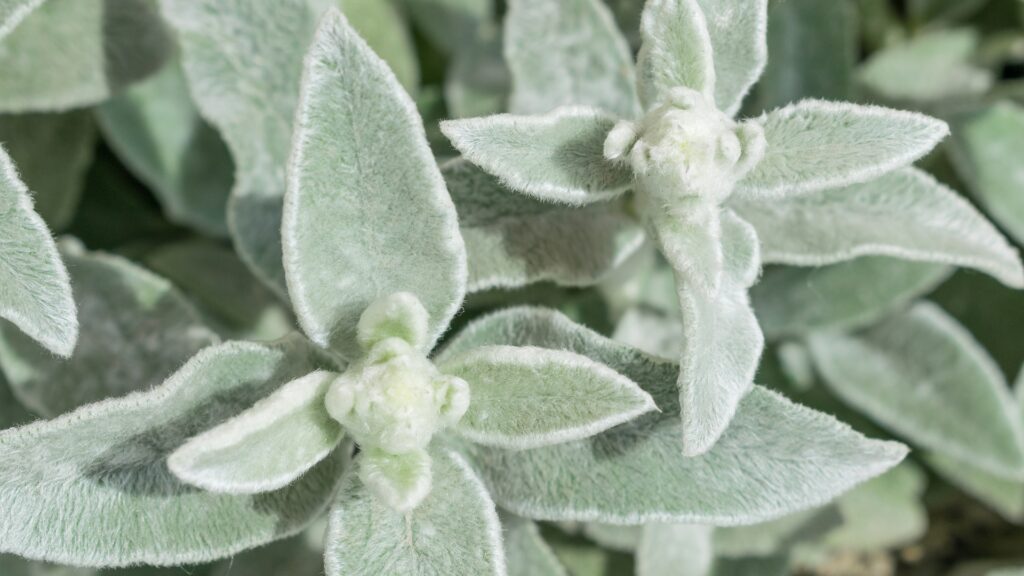Gardening isn’t just about creating a pretty space—it’s about planting smart. The right plants can transform your garden into a vibrant, low-maintenance haven that bursts with color, fends off weeds, and buzzes with happy pollinators.
With a few thoughtful choices, you can craft a garden that’s as hardworking as it is breathtaking.
1. Lavender
The purple haze of this plant creates a visual feast for the eyes. Lavender, with its fragrant blooms, acts as a natural weed barrier due to its dense foliage.
Its enticing aroma is irresistible to bees and butterflies, making it a pollinator’s haven. In the garden, lavender not only adds a splash of color but also plays a dual role in keeping weeds at bay and drawing in beneficial insects. The versatility of this plant makes it a must-have for any garden enthusiast looking to enhance both beauty and functionality.
2. Creeping Thyme
Imagine a soft carpet that covers every inch of your garden bed. Creeping thyme spreads quickly, creating a dense mat that leaves no room for weeds to invade.
This plant’s tiny blossoms are a magnet for bees, drawing them in with their sweet nectar. As it carpets the ground, creeping thyme provides a fragrant and visually appealing solution to weed control, while simultaneously inviting pollinators to your space. It’s an excellent choice for those looking to add both charm and practicality to their garden layout.
3. Coneflower
A splash of vibrant color brightens any garden. Coneflowers are not only striking but also effective at suppressing weeds with their robust growth.
These hardy plants are beloved by butterflies, providing ample nectar throughout the growing season. Coneflowers’ resilience makes them ideal for those who want a low-maintenance yet visually stunning garden.
As they thrive, these flowers create an environment where weeds struggle to take hold, making them a valuable addition to any pollinator-friendly garden.
4. Sedum
A garden’s secret weapon lies in its ability to fend off weeds while attracting pollinators. Sedum, with its succulent leaves and star-shaped flowers, excels at this dual role.
Its thick foliage forms a blanket over the soil, effectively crowding out weeds. Meanwhile, its blooms are a favorite among bees, offering a reliable nectar source.
Sedum’s low-maintenance nature makes it a gardener’s delight, adding intrigue and resilience to any garden plot. Whether in a rock garden or container, sedum is sure to charm both you and your garden visitors.
5. Yarrow
An often overlooked garden hero stands ready to transform your space. Yarrow, with its feathery foliage and vibrant clusters of flowers, is a powerhouse in weed suppression.
This plant’s adaptability allows it to thrive in various conditions, making it a versatile addition to any garden. Its blooms are highly attractive to pollinators, especially butterflies, which flock to its bright colors.
As yarrow spreads, it creates a natural barrier against unwanted growth, offering a beautiful yet practical solution for maintaining a healthy garden environment.
6. Bee Balm
A splash of bold color can transform any dull garden. Bee balm, with its vibrant red and pink blooms, serves as a natural weed suppressant with its thick, bushy growth.
Its aromatic flowers are a major attraction for hummingbirds and bees, providing them with a feast of nectar.
As this plant spreads, it not only beautifies the landscape but also creates a natural barrier against unwanted growth. With bee balm, your garden will be alive with color and buzzing with activity, making it a must-have for any nature-loving gardener.
7. Marigold
Colorful blossoms greet all who venture into the garden. Marigolds, with their vibrant orange and yellow flowers, excel in deterring weeds due to their dense canopy.
Their strong scent is a known deterrent for pests, while simultaneously attracting beneficial insects like butterflies. This dual action not only beautifies the garden but also creates a healthier ecosystem.
Marigolds are an easy-to-grow option that adds a cheerful touch to any garden, making them a favorite among both novice and expert gardeners alike.
8. Catmint
Their soft hues create a soothing garden oasis. Catmint, with its aromatic leaves and purple-blue flowers, quickly spreads to form a lush ground cover.
This plant’s delightful scent is a favorite among bees, ensuring a lively garden buzzing with activity. As catmint fills in, it leaves little room for weeds to grow, making it an effective natural solution for weed control.
Whether used as edging or a standalone feature, catmint is a charming addition that brings both beauty and utility to your outdoor space.
9. Sunflower
Towering giants that greet the sun. Sunflowers, with their bright yellow petals and towering stalks, are not only stunning but also effective at shading out weeds.
Their large blooms provide ample nectar and pollen, attracting a host of pollinators, including bees and butterflies.
As sunflowers grow, they create an environment that makes it difficult for unwanted plants to thrive. These cheerful giants are a delight to have in any garden, offering both visual appeal and a practical solution for managing weeds and supporting pollinators.
10. Zinnia
A burst of color that captivates the senses. Zinnias, with their bold and diverse blooms, create a lively display that suppresses weeds through their robust growth.
These flowers are a favorite among butterflies and bees, offering a rich source of nectar throughout the season.
By planting zinnias, gardeners can enjoy a riot of color while also promoting a healthy ecosystem. Their ability to deter weeds and attract pollinators makes zinnias a delightful and practical choice for any garden.
11. Goldenrod
Golden waves sway gently in the breeze. Goldenrod, with its tall, vibrant plumes, excels in crowding out weeds and enriching soil.
Its bright yellow flowers are a beacon for bees and butterflies, turning any garden into a lively pollinator haven. As goldenrod spreads, it creates a natural barrier, reducing the need for chemical weed control.
Its towering presence adds dimension to the garden, making goldenrod a beneficial and beautiful addition to any landscape seeking a touch of wild elegance.
12. Black-eyed Susan
A vibrant splash that catches the eye. Black-eyed Susans, with their sunny yellow petals and distinctive dark centers, are adept at shading out weeds.
Their flowers are a magnet for pollinators, ensuring a buzz of activity throughout the growing season.
By incorporating black-eyed Susans into your garden, you not only enjoy their cheerful blooms but also benefit from their ability to support a healthy ecosystem. They are resilient and easy to maintain, making them an excellent choice for both novice and experienced gardeners.
13. Butterfly Bush
A magnet for the winged visitors. The butterfly bush, with its fragrant, cone-shaped flowers, is renowned for its ability to attract butterflies and bees.
Its rapid growth and dense foliage make it an effective weed suppressant, creating a lush, colorful barrier against unwanted intruders.
By planting a butterfly bush, gardeners can create a dynamic display that is both beautiful and beneficial. This plant’s ability to draw in pollinators and deter weeds makes it a standout choice for vibrant, ecosystem-friendly gardens.
14. Echinacea
A garden staple that never disappoints. Echinacea, with its striking cone-shaped flowers, is a powerhouse in attracting bees and butterflies.
Its robust growth habit helps suppress weeds, providing a natural solution to garden maintenance.
Echinacea not only adds visual interest but also enhances the ecological health of any garden. Its dual role in supporting pollinators and controlling weeds makes it a valuable addition to your planting scheme, ideal for gardeners seeking both beauty and functionality.
15. Hosta
A shade lover’s dream. Hostas, with their broad, textured leaves, create a dense, weed-suppressing cover in shaded areas.
Their flowers, while often overlooked, are attractive to bees, adding a subtle charm to the garden. As hostas spread, they effectively crowd out weeds, making them a practical choice for low-maintenance landscapes.
These versatile plants thrive in various conditions, ensuring that even the shadier corners of your garden can be vibrant and weed-free.
16. Milkweed
The unsung hero of the garden. Milkweed, essential for monarch butterflies, offers a crucial food source for pollinators.
Its robust stalks and leaves provide a natural defense against weed encroachment, helping maintain a tidy garden. As milkweed flourishes, it plays a vital role in supporting pollinator populations, ensuring a rich biodiversity in your garden.
By planting milkweed, you’re not only beautifying your space but also contributing to the survival of essential pollinators, making it a meaningful addition to any landscape.
17. Lantana
A riot of color brings joy to any garden. Lantanas, with their multi-hued blooms, create a stunning display that deters weeds through their compact growth.
These flowers are particularly attractive to butterflies and bees, offering a continuous supply of nectar.
By choosing lantana, gardeners can enjoy a vibrant and ever-changing landscape that supports a thriving ecosystem. Its ability to deter weeds and attract pollinators makes lantana a versatile and rewarding choice for garden enthusiasts.
18. Daylily
An effortless charm that brightens your space. Daylilies, with their trumpet-like flowers, are not only visually appealing but also excellent at suppressing weeds.
Their dense clumps provide little opportunity for weeds to take root, ensuring a tidy garden.
These hardy plants attract pollinators, including bees, with their sweet nectar, supporting a healthy garden ecosystem. By planting daylilies, you can enjoy a low-maintenance garden that’s both beautiful and beneficial.
19. Cosmos
A delicate beauty with a powerful impact. Cosmos, with their feathery foliage and vibrant blooms, excel in crowding out weeds while attracting pollinators.
Their flowers are a favorite among butterflies and bees, turning any space into a lively haven.
Cosmos’ ability to thrive in various conditions makes them an ideal choice for gardeners seeking an easy-to-grow plant that supports a healthy ecosystem. Their charming blooms add a whimsical touch to any garden, making cosmos a delightful addition.
20. Coreopsis
A cheerful addition to any landscape, coreopsis is known for its sunny yellow blooms. These flowers create a vibrant display that naturally suppresses weed growth.
Their nectar-rich blooms are a magnet for pollinators, ensuring a garden buzzing with life throughout the season.
Coreopsis is not only beautiful but also resilient, making it an excellent choice for gardeners looking to enhance their space with minimal maintenance. By adding coreopsis to your planting scheme, you can enjoy a lively and weed-resistant garden.
21. Phlox
A fragrance that fills the air with delight. Phlox, with their clusters of vibrant blooms, create an eye-catching display that suppresses weeds through their dense growth.
These flowers are a favorite among pollinators, ensuring a garden alive with butterflies and bees.
By incorporating phlox into your garden, you benefit from their beauty and practicality. Their ability to attract pollinators and crowd out weeds makes phlox a valuable and aesthetically pleasing choice for any garden.
22. Russian Sage
An aromatic presence that elevates any garden space. Russian sage, with its silvery leaves and purple flowers, forms a striking display that deters weeds with its robust growth.
The plant’s fragrant blooms are highly attractive to bees, ensuring a garden full of activity. Its drought-resistant nature makes Russian sage an ideal choice for gardeners seeking low-maintenance beauty.
By planting Russian sage, you enrich your garden with both charm and practicality, supporting pollinators while keeping weeds at bay.
23. Wild Geranium
Looking for a ground cover that’s native, low-maintenance, and not afraid of a little shade? Wild geranium is your go-to. This perennial spreads gently, creating a soft, leafy mat that keeps weeds from sneaking in.
In spring and early summer, it pops with delicate pink or purple blooms that bees and butterflies adore. It’s also deer-resistant, which is a huge plus if your garden doubles as a buffet for wildlife.
Whether you’re filling in bare patches or softening shady edges, wild geranium works overtime for your garden’s health and beauty.
24. Strawberries
Who knew fighting weeds could be so delicious? Strawberries are one of the best edible ground covers out there.
Their thick, low-growing leaves smother weeds before they even get started, and their sweet blooms bring in bees by the dozens. As a bonus, you’ll get juicy fruit right from your own backyard—perfect for snacking, baking, or showing off.
They grow well in containers, garden beds, or between stepping stones. Plant them once, and they’ll spread joy (and berries) for seasons to come.
25. Salvia
A burst of color and fragrance that never fails to impress. Salvia, with its spiky blooms in vibrant purples, reds, and blues, creates a stunning show while naturally suppressing weeds through its dense, bushy growth.
Its nectar-rich flowers are a major attraction for bees, butterflies, and even hummingbirds, ensuring constant activity in your garden. Hardy and drought-tolerant, salvia is perfect for those seeking a low-maintenance plant that offers big rewards.
By planting salvia, you add vertical interest, vivid color, and essential support for pollinators—all while keeping weedy invaders at bay.
26. Lamb’s Ear
A soft, silvery carpet that transforms your garden’s texture. Lamb’s ear, with its velvety leaves and low, spreading habit, is a natural weed deterrent, covering the ground thickly and leaving little room for competition.
In late spring and summer, it sends up spires of small purple flowers that bees absolutely love. Its drought resistance and ability to thrive in poor soil make it a standout for effortless beauty.
Whether edging paths or filling in sunny patches, lamb’s ear provides a tactile, weed-fighting, pollinator-friendly solution that adds charm and character to your landscape.

